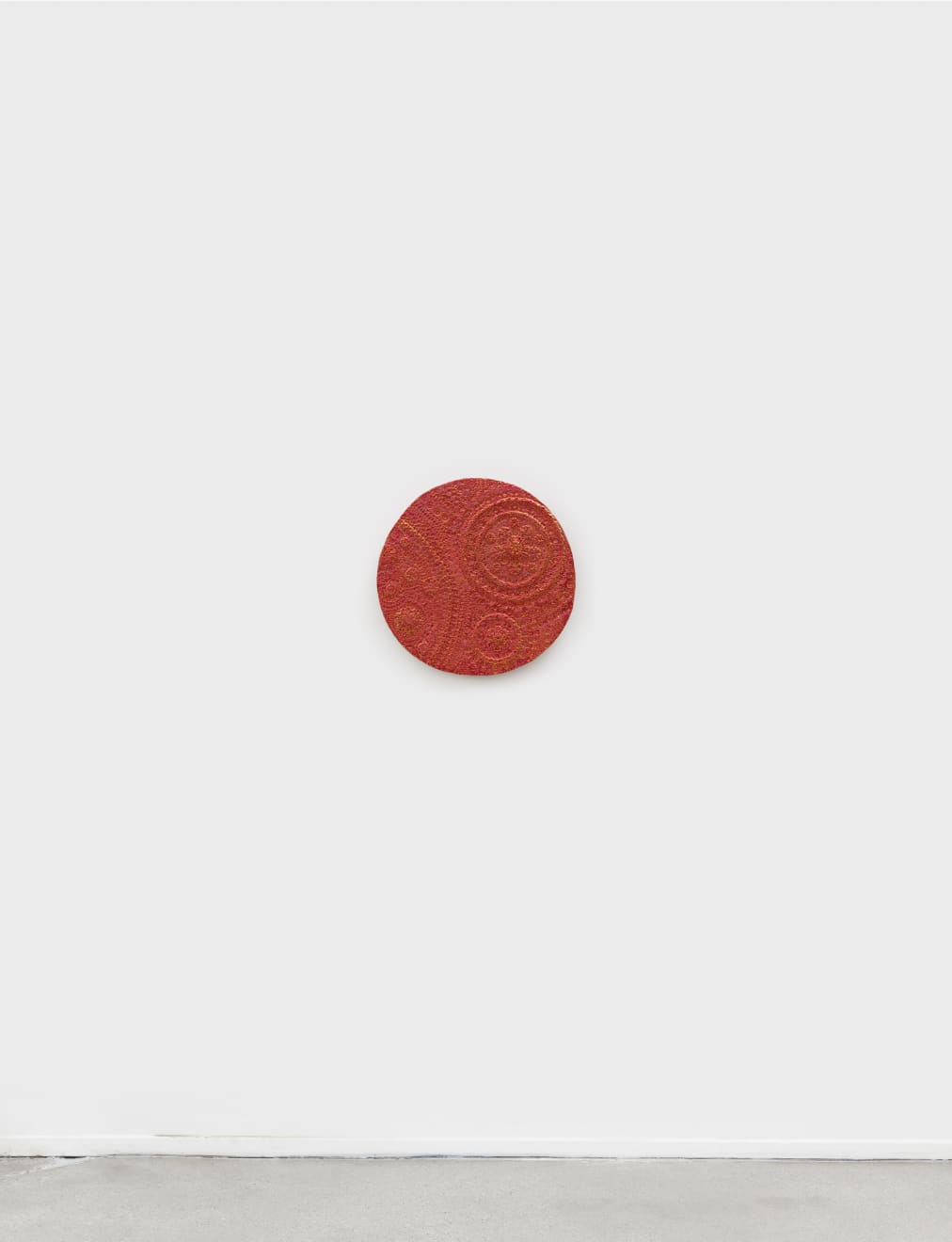 Pae White
Toing & Froing, Marmalade
Pae White
Toing & Froing, Marmalade2020
(alternate view)
 Pae White
Toing & Froing, Marmalade
Pae White
Toing & Froing, Marmalade2020
ceramic with particle vapor deposition coating
diameter 58 cm / 23 in
 Pae White
Toing & Froing, Marmalade
Pae White
Toing & Froing, Marmalade2020
(alternate view)
 Pae White
Toing & Froing, Marmalade
Pae White
Toing & Froing, Marmalade2020
(alternate view)
 Pae White
Toing & Froing, Marmalade
Pae White
Toing & Froing, Marmalade2020
(detail)
Pae White
Further images
The wet clay is colored with blue pigments and pressed with various found and made tools, imprinting the patterning on the work’s surface. The clay disk is fired, and the surface coloration is created in a pressurized chamber through a process called PVD - Physical Vapor Disposition. Unlike the more traditional methods for glazing ceramics, whereby the glaze coats the surface and is then fired at the necessary temperature in order to transform and affix the material to its final state; the surface treatment via the PVD process is created by a gaseous, pressured reaction, whereby particles of ceramic powder vaporize and rise to the top of the chamber, covering the surface of the given object with a film that forms the final coating. The process is most typically used in order to improve the hardness, wear resistance, and oxidation resistance of various objects, such as automobiles, aerospace vehicles, metals, firearms, cutting tools, etc.






